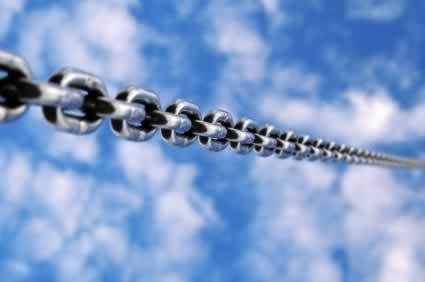Chapter 5 & 6 Questions
1. Describe the three network applications that we discussed in this section and the tools and technologies that support each one.
- Portal is a Web-based, personalized gateway to information and knowledge that provides relevant information from different IT systems and the Internet using advanced search and indexing techniques.
- Communication
- Collaboration refers efforts by two or more entities who work together to accomplish certain tasks.
2. What are the business conditions that are leading to the increased importance of videoconferencing?
Video Conferencing allows users in one location to view and communicate with users in another location. Business are increasing the use of video conferencing as it allows users to continue to do business without traveling domestically or internationally. It reduces time, cost and allows the business to work to be completed fast and efficiently.
Section 5.21. Describe the underlying technologies, applications and types of Web sites that comprise Web 2.0.
Web 2.o is a loose collection of information technologies and applications and of the websites that use them.
The technologies, applications and types of web sites thaqt comprise Web 2.0 include:Ajax: is a web development technique that allows web pages to quickly reload new dataTagging: using keywords to describe a piece of web‐related content such as an article, video, image or blogWikis: a website which anyone can post material, and even edit add or make changes to material.
Really Simple Syndication (RSS): a technology that allows users to receive the customised information when they want it.
2. Describe the function of Web services.
Web servers are applications that are delivered over the web that users can select and combine through any device e.g. Google.
3. Describe the function of service-oriented architectures.
Service-oriented architectures (SOA) is an IT architecture that makes it possible to construct business applications using web servers. SOA can be reused within the organization in other applications.
Section 6.1 1. Define e-commerce and distinguish it from e-business.
Electronic commerce (e-commerce) is the buying, selling, transferring orexchanging of products, services or information by means of computer networks, such as the Internet.E-business is a broader definition ofe-commerce, including buying and selling of goods and services, and also servicing customers, collaborating with partners, conducting e-learning and conducting electronic transactions within an organization.
2. Distinguish among B2C, B2B, C2C and B2E electronic commerce.
Business-to-consumer (B2C): the sellers are organizations and the buyers are individuals.Business-to-business (B2B): both the sellers and buyers are business organizations. B2B represents the vast majority of e-commerce.Consumer-to-consumer (C2C): an individual sells products or services to other individuals.Business-to-employee (B2E): An organization uses e-commerce internally to provide information and services to its employees. Companies allow employees to manage their benefits, take training classes electronically; buy discounted insurance, travel packages, and event tickets.
3. List some benefits and limitations of e-commerce.
Allows producers to sell there products 24/7 in the national and international markets with lower costs. Therefore consumers also benefit as they have access to a wide range of goods and services 24/7 and are able to access the web sites easily at home in there own time.
Section 6.2 1. List the major issues relating to e-tailing. E-tailing aka e-retailing is the direct sale of products and services through store fronts or electronic malls.
The 2 main issues relating to e-tailing are channel conflict and order fulfillment.Channel conflict is the alienation of existing distributors when a company decides to sell to customers online. Therefore some people may not have access to computers, internet etc so are not able to view or purchase the good.Order fulfillment is quickly performing tasks so as the good is delivered to the customer quickly and so money can be collected. The issue here is unreliable suppliers or customers which may cause time and money delays.
2. What are spamming, permission marketing and viral marketing?
Spamming is indiscriminate distribution of e-mail with out the user’s permission.Permission marketing is a method of marketing that business use that asks consumers permission to voluntarily accept online advertising and promotional emails.Viral Marketing is online word of mouth marketing.
Section 6.4 1. List the various electronic payment mechanisms.
BPay and Paypal are the 2 most widely payment mechanisms online.
But you can also pay with EFTPOS(card)

2. What are micropayments?
Very small payments over the internet
Section 6.5 1. List some ethical issues in EC.
-Privacy Violations
-Transaction Security Breaches
-Illegal Activities
2. List the major legal issues of EC.
-Privacy Violations
-Transaction Security Breaches
-Illegal Activities




